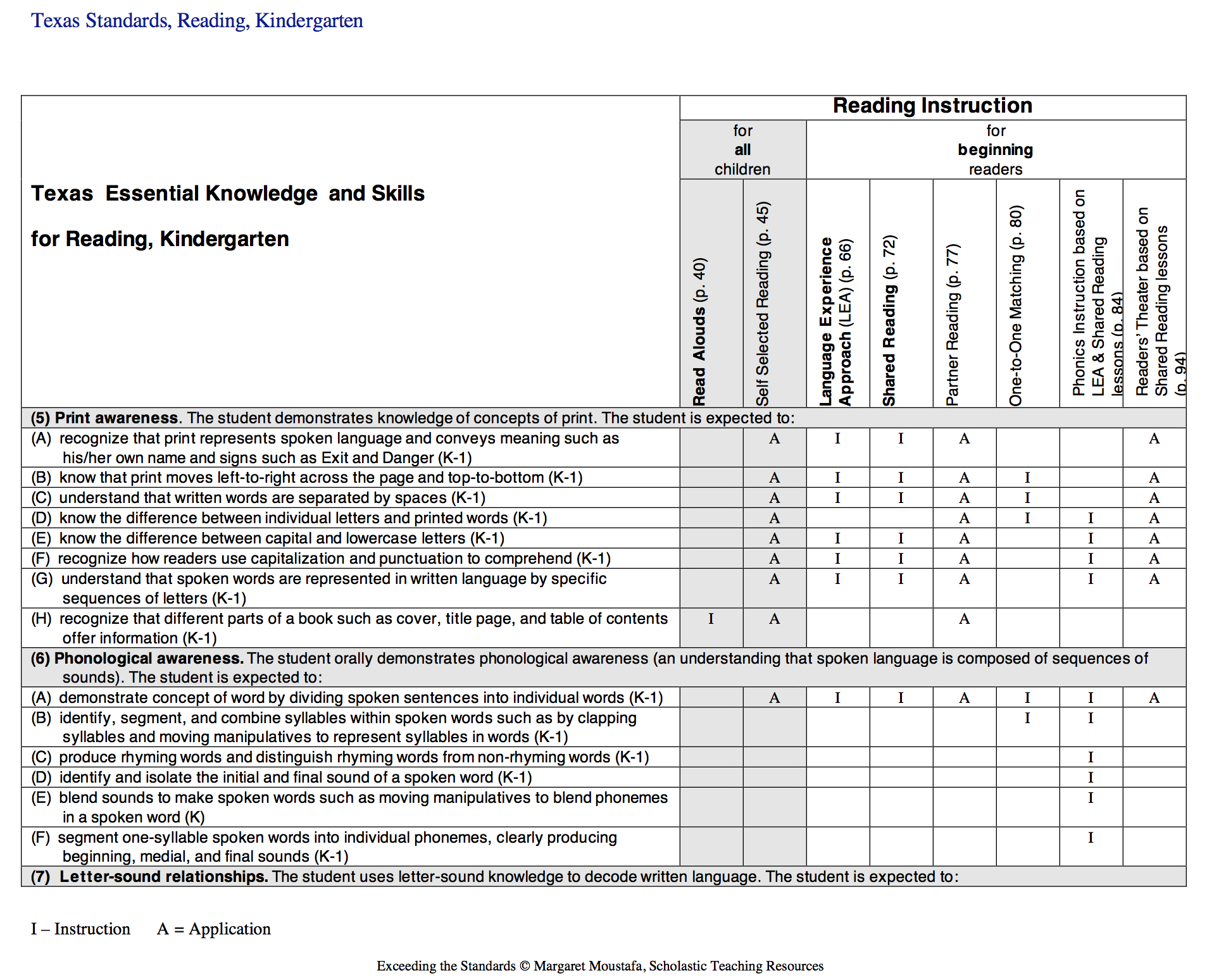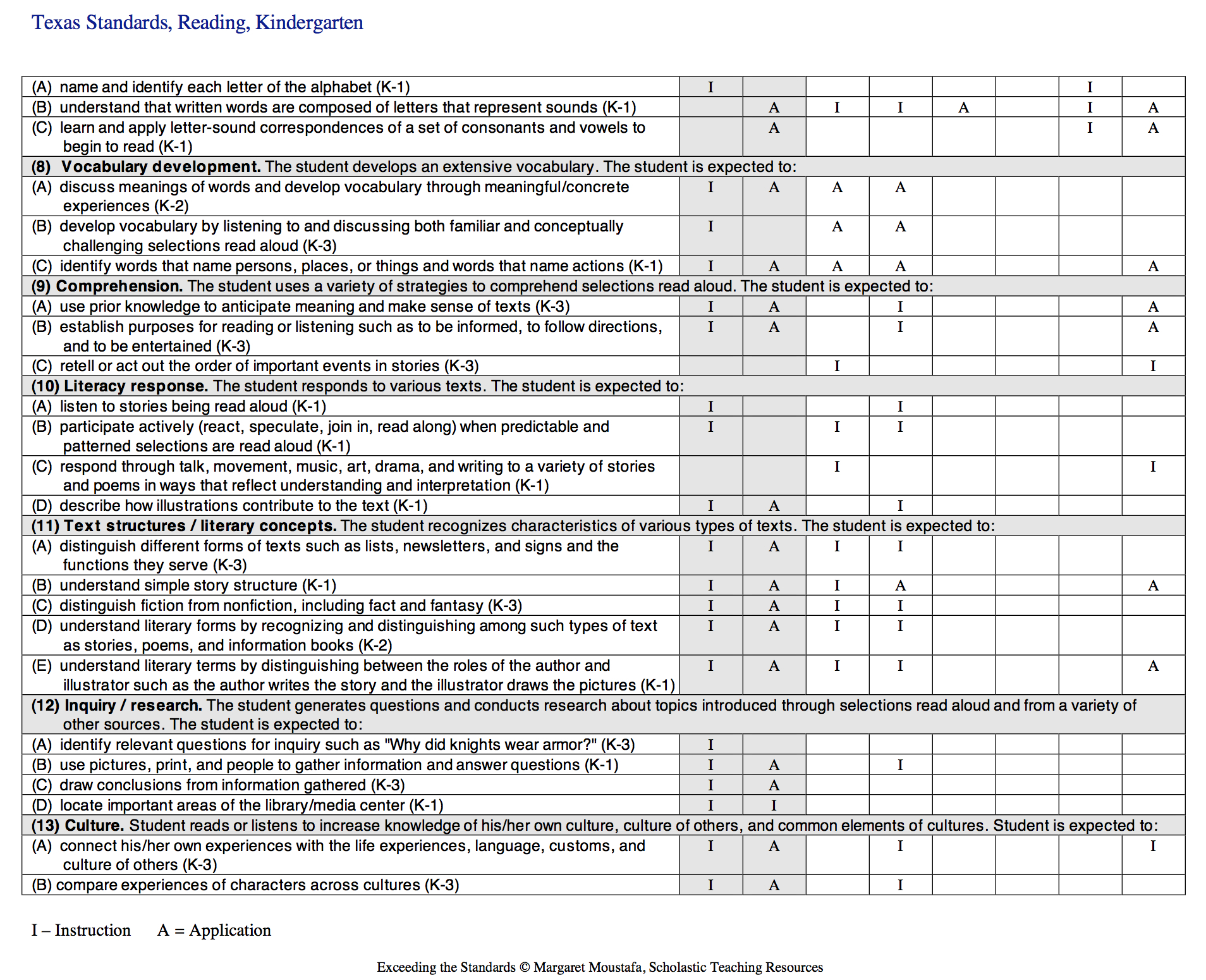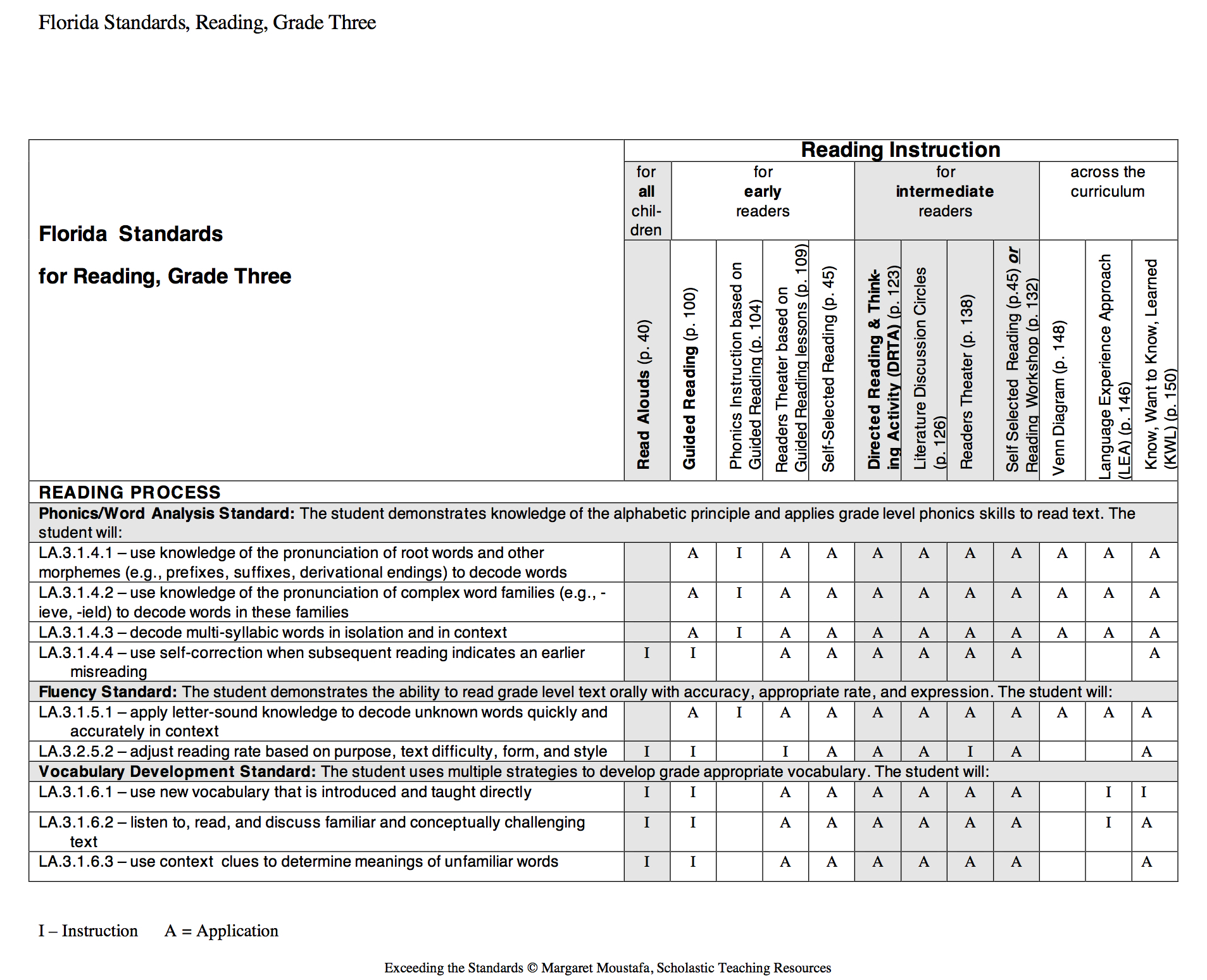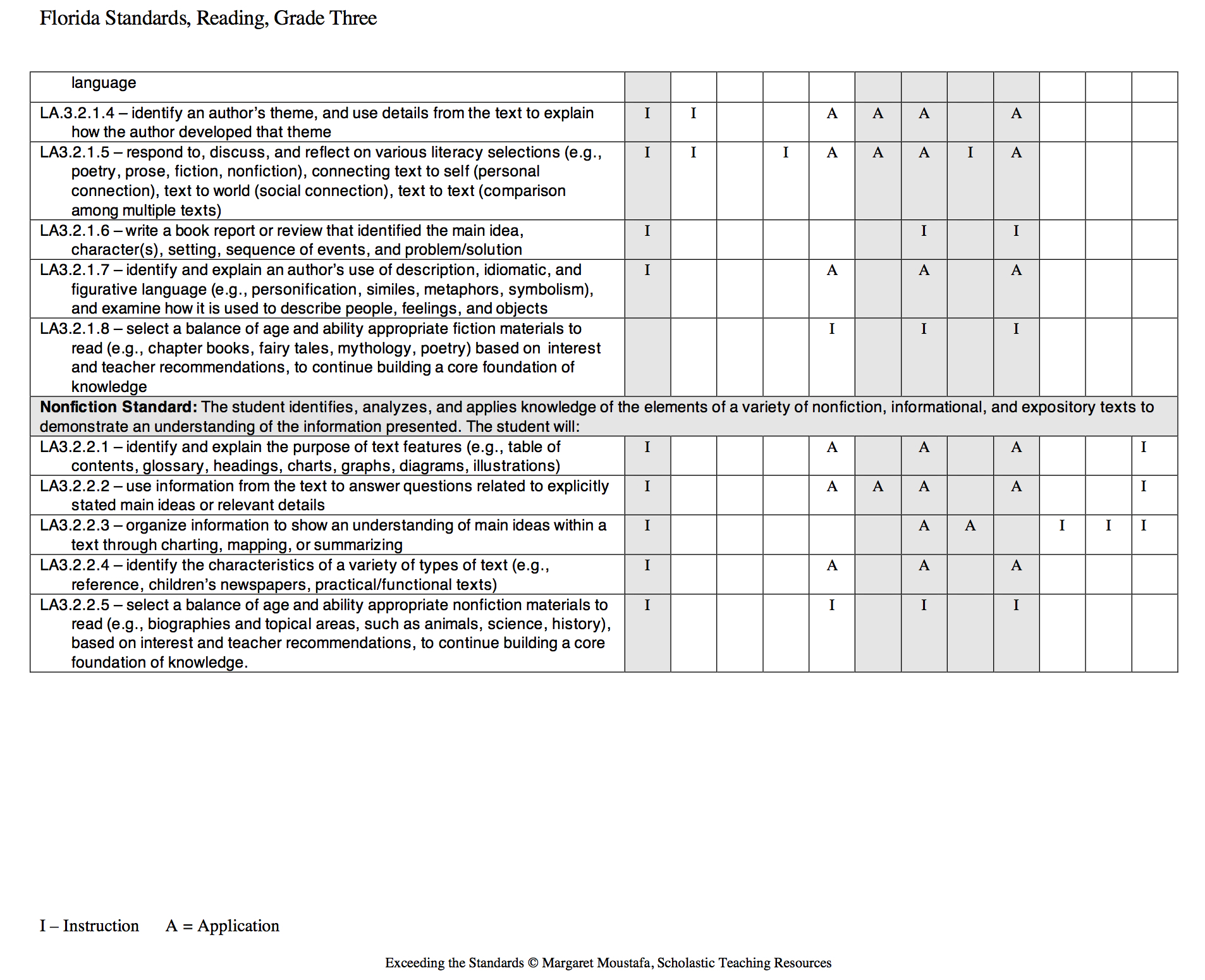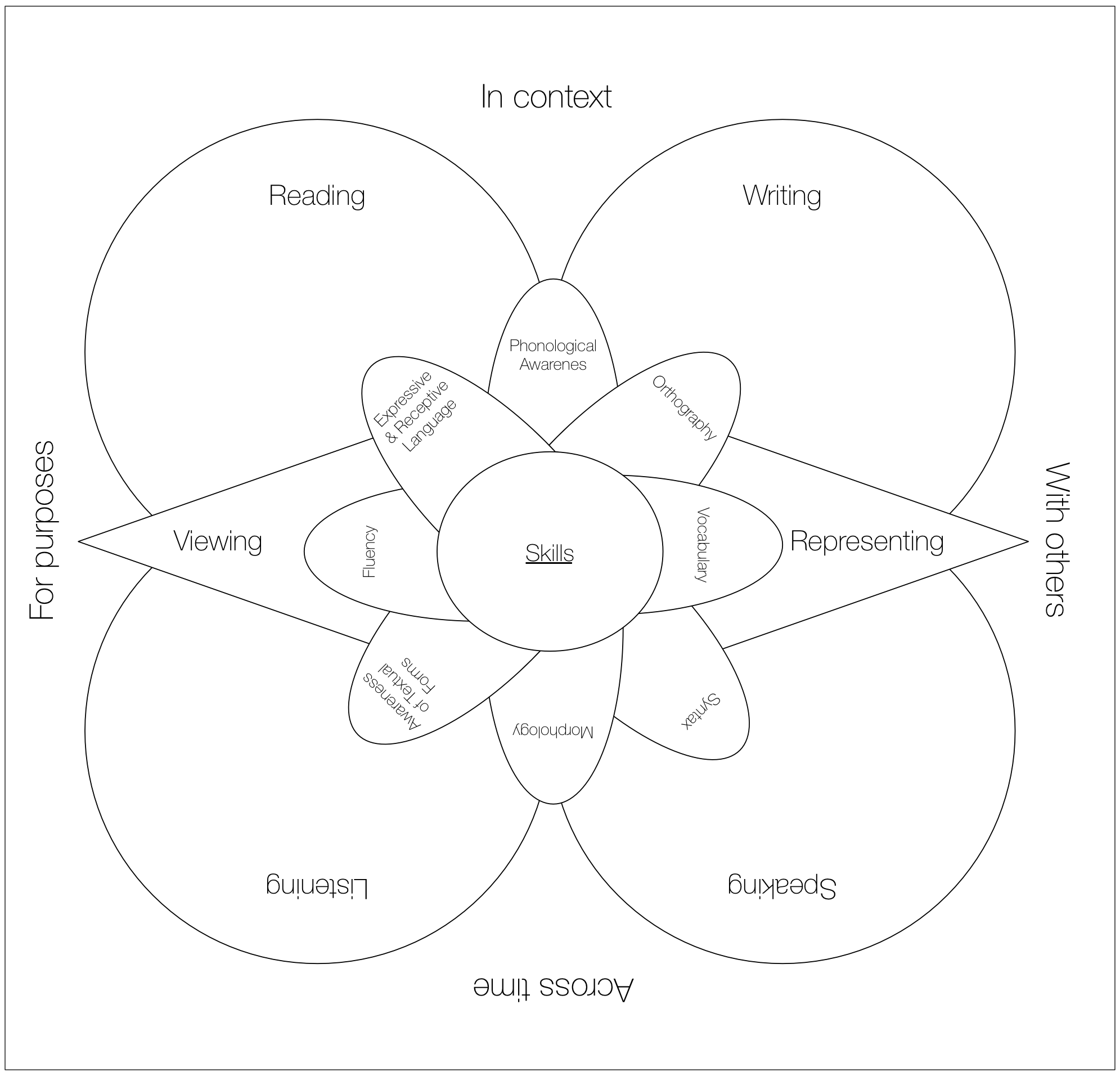BACK TO ESSAY CONTENTS PAGE
Managing a Balanced Approach to Literacy
Main Text I References I Comments
ADDED 27/08/14
The best teachers at all levels should be equally equipped to develop and monitor core skills whilst providing rich opportunities for students to read, write, speak and learn in authentic, meaningful contexts. For our present purpose, we will describes the two approaches as follows: skills-based and usage-based.
Therefore, a skill-based approach requires a teacher to be diligent, focused on detail, encouraging, exact and skilled at monitoring and assessing. A skill-based approach emphasises the ongoing development of language skills, such as phonemic awareness, spelling, sentence construction, reading fluency, vocabulary development and basic comprehension. As a schema, this approach sees a learner as progressing in a linear development of increasing sophistication (Paris, 2005; Stahl, 2011). In such a perspective, a teacher is vigilant in monitoring the increasing competency of the learner and the teacher hopes to see his or her student acquire and demonstrate a robust knowledge of language.
In contrast, a usage-based approach requires a teacher who understands the importance of authentic, meaningful literacy; knows how to model and monitor the processes of reading and writing; knows how to establish opportunities so that activities are transformed to memorable events; and can reflect on what students should be able to read and write and why. (Chall, Jacobs, & Baldwin, 1990) In such an approach, language knowledge is only one piece of the puzzle. The learner must also assess the situation or text, retrieve relevant background knowledge; guided in reading/writing to suit the situation or text; activate the imagination to conceptual, visualise and draw connections; and develop certain intentions and expectations to guide purpose and comprehension (Gebhard, 2007). As a schema, this approach sees a learner as one who develops a repertoire of written practices and forms and a library of reading experiences and knowledge (Tunmer, et al., 2013)
Therefore, literacy is both a notation to gain control over and a tool used within context to gain knowledge and/or act. First, literacy as a notation requires a significant amount of control over the linguistic system.
"Just as in writing we learn a particular basic form of letters and then vary it later, so we learn first the stability of things as the norm, which is then subject to alteration." (Wittgenstein, On Certainty #473)
Courtesy of Reading Horizons
One main tenant of this is as follows, ‘overlearning the basics of decoding reduces the amount of mental effort to read.’
"This shape that I see - I want to say - is not simply a shape; it is one of the shapes I know; it is marked out in advance. It is one of those shapes of which I already had a pattern in me." (Wittgenstein, Zettel, #209)
As Maryanne Wolf (2008) emphasises, the more fluent one becomes, the more cognitive energies can be dedicated to higher order processes in reading (e.g. comprehension). With fluency, the learner is better able to develop the confidence and skills to extract deeper meaning from the written word (Wolf, Ullman-Shade & Gottwald, 2012)
"A script you can read fluently works on you differently from one that you can write; but not decipher easily. You lock up your thought up in this as though in a casket." (Wittgenstein, Culture & Value)
However, automatic decoding is necessary but not sufficient for literacy (Paris, 2005; Tumnmer et al, 2013). Literacy is defined as making meaning from print, not merely being able to pronounce it. (Moustafa, 2008)
"Doesn’t understanding start with a proposition, with a whole proposition? Can you understand half a proposition?" (Wittgenstein, Philosophical Grammar)
Therefore, Wolf (2008) is quick to remind us that fluency provides the cognitive space for comprehension but this does not guarantee that the learner will make the leap to making meaning deeply and independently. Learning to read requires one to develop the habits of the mind through scaffold practice that enable the learner to concentrate, visualise, process and get the gist of the text. When I think of comprehension, I consider the following quote metaphorically.
Often, when I have had a picture well framed or have hung it in the right surroundings, I have caught myself feeling as proud as if I had painted the picture myself. That is not quite right: not “as proud as if I painted it, but as proud as if I had helped to paint it, as if I had, so to speak, painted a little bit of it. (Wittgenstein, On Certainty)
And James Paul Gee (2003) reminds us that, “After all, we never just read 'in general', rather, we always read or write something in some way. We don't read or write newspapers, legal tracts, essays in literary criticism, poetry, or rap songs, and so on and so forth through a nearly endless list, in the same way. Each of these domains has its own rules and requirements.” (Gee, 2003, pg 28). Therefore, “even when we want to think about a child learning to read initially, we want to think about what sorts of texts we want the child eventually to be able to read in what sorts of ways. No learner grows up able to read all sorts of texts in all ways.” (Gee, 2003, pg 28)
“When the boy or grown-up learns what one might call specific technical languages, e.g. the use of charts and diagrams, descriptive geometry, chemical symbolism, etc. he learns more language games. (Remark: The picture we have of the language of the grown-up is that of a nebulous mass of language, his mother tongue, surrounded by discrete and more or less clear-cut language games, the technical languages” (Wittgenstein quoted in Phillips, 1977, pp 29 - 31)
A balanced pedagogy requires the following: (a) regular, explicit instruction in linguistic features, (b) time spent on strengthening comprehension and composition, and (c) embedding this development in authentic (learning) practices so that the learners are developing a repertoire of purposeful linguistic practices.
Put another way, a balanced literacy pedagogy must
- rich, scaffolded learning experiences in which language serves a highly contingent role;
- dedicated practice in "word studies" as learners focus on form, meaning and use through the use of spelling dictionaries, word walls, progressive brainstorms and more;
- guided practice with reading that is highly modelled and exhibits a gradual release of control as learners adopt a greater and greater role in decoding and meaning making;
- guided practice with writing as learners develop compositional habits, forms and techniques;
- anchored reading, writing, speaking and listening in authentic, real world learning practices; and
- opportunities to motivate and inspire learners to become (embody) the role of readers and writers in different ways (discourses).
As reported by Gambrell, Malloy & Mazzoni (2011), "the goal of comprehensive literacy instruction is to ensure that all achieve their full literacy potential. This instruction should prepare our students to enter adulthood with the skills they will need to participate fully in a democratic society that is part of a global economy. Students need to be able to read and write with purpose, competence, ease and joy. Comprehensive literacy instruction emphasises the personal, intellectual and social nature of literacy learning." (pg 18).
Teachers must "understand literacy learning well enough to adapt the learning environment, materials, and methods to particular situations and students," which requires "a carefully orchestrated integration of skills and strategies, content, and literature ... [to] motivate and support individual students." (Gambrell, Malloy & Mazzoni, 2011, pg, 19)
To contribute toward this aim, Gambrell, Malloy & Mazzoni (2011) identified ten features that comprehensive literacy instruction should include. Seven of the features are summarised below:
- Create a classroom culture that fosters literacy motivation: a highly engaging and motivating atmosphere where clear routines and enabling relationships provide opportunities for students to engage, practice, share and grow;
- Teach reading for authentic, meaning-making purposes (for pleasure, to be informed, to perform a task, etc): provide diverse reading opportunities that initiate students into a range of reading practices, including the imaginative, aesthetic, interpretative, informative, critical and functional.
- Provide students with scaffolded instruction in phonemic awareness, phonics, vocabulary, fluency and comprehension to promote individual reading: an environment in which (a) teachers provide ample opportunities for explicit instruction and practice in core skills and (b) both teachers and students can monitor and reflect upon progressive improvement.
- Give students time for self-selected independent reading: carve out the space and time so students can practice reading independently with a ready supply of age- and skill-appropriate reading materials (e.g. books and articles) that are of interest and of relevance.
- Use multiple texts that build on prior knowledge, link concepts, and expand vocabulary: reading material should be selected that can add to the knowledge that students are encountering in and out of the classroom. In this case, reading engagement should be purposeful and related to inquiry and discovery (e.g. explore a topic - like bullying - by integrating concepts explored in fiction, brochures, art and more).
- Balance teacher- and student-led discussion of texts: students are empowered when the reading comprehension process is made visible through discussions which are guided by clear yet flexible routines, and the reciprocal teaching method is a great tool to foster student-led discussions.
- Differentiate instruction using a variety of instructionally relevant assessments: deliver instruction that is within a student's zone of proximal development whilst also providing high challenge with high support. Catering for a diversity of needs is a challenge presented in the classroom, and it is a challenge that expert teachers accept and see as fundamental to the profession.
The imperative is to implement a balanced pedagogy that consolidates current skills whilst preparing learners for subsequent requirements by adopting best practice (Roskos, et al, 2009):
- Creation of supportive instructional environments where time is used wisely.
- Attention to skills and strategies necessary for reading success, including decoding, vocabulary, and comprehension.
- Use of scaffolded instruction to engage all learners in active learning. Instruction is structured so that learners “experience” a strategy or skill, much like a rehearsal as they (a) observe modeling by the teacher, (b) participate in guided practice, and (c) try out new strategies and skills on their own.
- Intentional connections to the language arts and disciplinary content. Students are taught to view reading as a tool for learning about their world.
- Acknowledging that oral language is the foundation of learning to read and write;
- Providing books and text that are plentiful and are varied in genre and form;
- Implementing an evidence-based curriculum that guides reading instruction and teachers are prepared to teach the reading program well;
- Adhering to an assessment system and treating evaluation as a tool for change; and
- Recognising how family and community involvement are integral early parts of early grades reading.
Additional Readings (back to top)
Au, K. H. (2002). Balanced Literacy Instruction: Addressing Issues of Equity. In C. M. Roller (Ed.), Comprehensive Reading Instruction Across the Grade Levels: A Collection of Papers from the Reading Research 2001 Conference (pp. 70–87). International Reading Association.
Au, K. H.-P., & Mason, J. M. (1981). Social Organizational Factors in Learning to Read: The Balance of Rights Hypothesis. Reading Research Quarterly, 17(1), 115. doi:10.2307/747251
Pressley, M. (2001). Comprehension Instruction: What Makes Sense Now, What Might Make Sense Soon. Reading Online. Retrieved April 14, 2014, from http://www.readingonline.org/aRTIcles/handbook/pressley/
Shanahan, T. (2014). Unbalanced comments on balanced literacy. At Shanahan on Literacy. Retrieved from http://www.shanahanonliteracy.com/2014/10/unbalanced-comments-on-balanced-literacy.html?m=1 on 14 November 2014.
References
Chall, J. S., Jacobs, V. A., & Baldwin, L. E. (1990). The Reading Crisis: Why Poor Children Fall Behind. Cambridge, MA: Harvard University Press.
Gambrell, L., Malloy, J., and Mazzoni, S. (2011). Evidence-based best practices in comprehensive literacy instruction. In L. Morrow and L. Gambrell (Eds.) Best practices in literacy instruction (4th Edition). (pp. 11 - 36). New York: The Guilford Press.
Gebhard, M., Harman, R., & Seger, W. (2007). Reclaiming Recess: Learning the Language of Persuasion. Language Arts, 84(5), 419–430.
Gee, J. P. (2003). Opportunity to learn: a language-based perspective on assessment. In Assessment in Education: Principles, Policy and Practice, Vol 10, No. 1, pp 27 - 46
Moustafa, M. (2008). Exceeding the standards: a strategic approach to linking state standards to best practices in reading and writing instruction. New York: Scholastic.
Paris, S. G. (2005). Reinterpreting the development of reading skills. Reading Research Quarterly, 40(2), 184–202. doi:10.1598/RRQ.40.2.3
Roskos, K., Strickland, D., Haase, J., & Malik, S. (2009). First Principles for Early Grades Reading Programs in Developing Countries.
Stahl, K. A. D. (2011). Applying new visions of reading development in today’s classroom. The Reading Teacher, 65(1), 52–56. Retrieved from http://steinhardt.nyu.edu/scmsAdmin/uploads/006/717/new visions.pdf
Tunmer, W. E., Chapman, J. W., Greaney, K. T., Prochnow, J. E., & Arrow, A. W. (2013). Why the New Zealand national literacy strategy has failed and what can be done about it: evidence from the progress in International Reading Literacy Study (PIRLS) 2011 and Reading Recovery Monitoring Reports.
Wittgenstein, L. (1967) Zettel. Edited by G.E.M. Anscombe and G.H. von Wright. Berkeley: University of California Press.
_____________ (1980). Culture and Value. Translated by Peter Winch. Chicago: The University of Chicago Press.
_____________ (1974). Philosophical Grammar. Edited by Rush Rhees. Translated by Anthony Kenny. Berkeley: University of California Press.
_____________ (1969). On Certainty. Edited by G.E.M. Anscombe and G.H. von Wright. Translated by D. Paul and G.E.M. Anscombe. New York: Harper Torchbooks.
Wolf, M. (2008). Proust and the squid: the story and science of the reading brain. Cambridge: Icon Books.
Wolf, M., Ullman-Shade, C., & Gottwald, S. (2012). The Emerging, Evolving Reading Brain in a Digital Culture: Implications for New Readers, Children With Reading Difficulties, and Children Without Schools. Journal of Cognitive Education and Psychology, 11(3), 230–240. doi:10.1891/1945-8959.11.3.230

